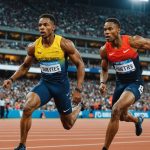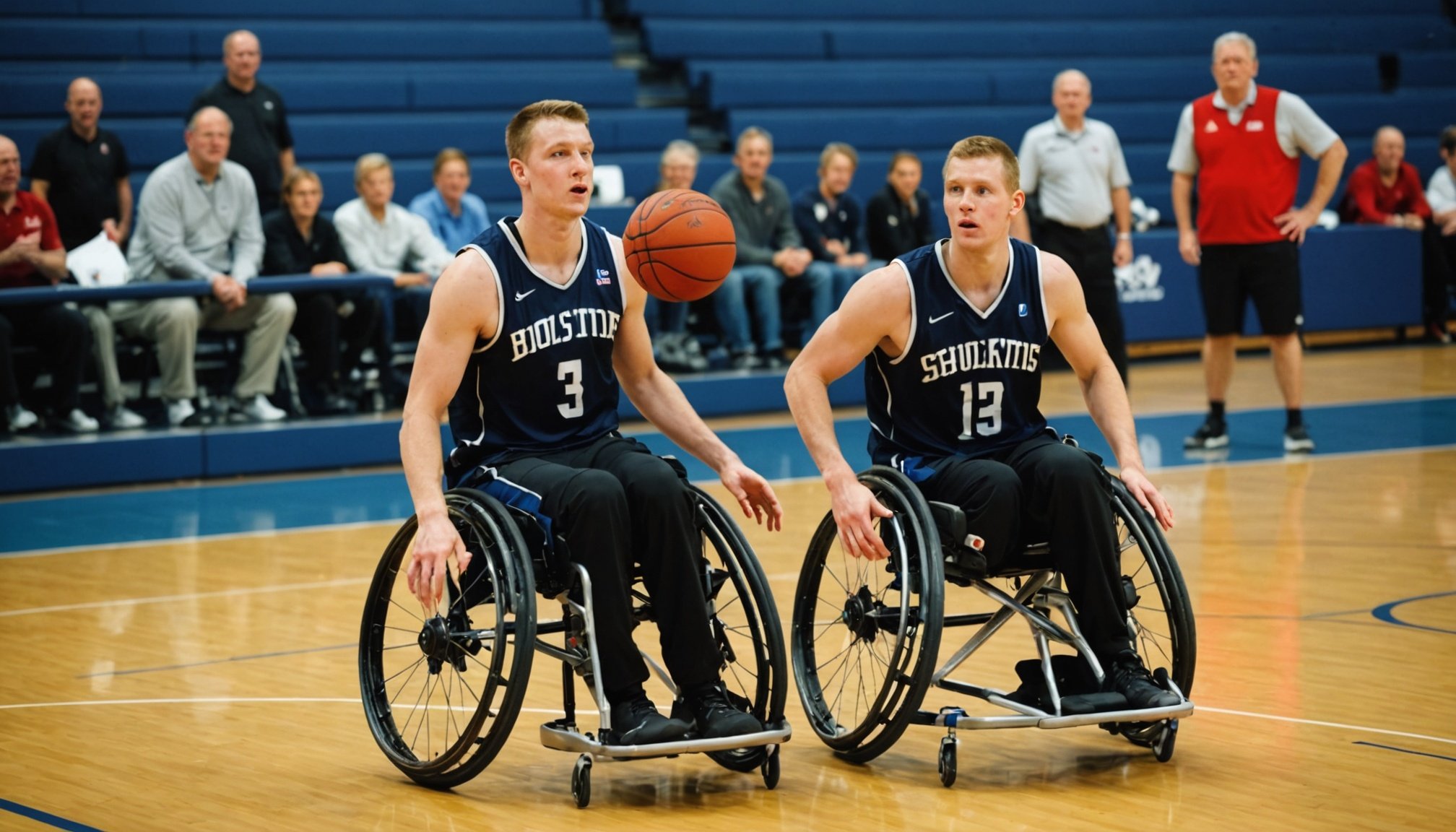Understanding Wheelchair Basketball Dynamics
Wheelchair basketball, a thrilling sport blending agility and strategy, presents unique challenges and opportunities. It’s essential to grasp the fundamentals to appreciate how gameplay unfolds. Players maneuver specialized wheelchairs with dexterity, coordinating with speed and precision. These mechanics are adapted from traditional basketball, tailored for athletes with varying physical capabilities.
Shooting Challenges
One critical aspect of wheelchair basketball is understanding the shooting challenges athletes face. Limited lower body movement affects balance, making it difficult to achieve shooting precision. Players must rely extensively on upper body strength and technique to propel the ball accurately. Adjusting for these limitations requires innovative approaches to training and in-game tactics.
This might interest you : Unlocking Speed: How Top Sprinters Utilize Performance Analytics to Boost Their Times
Adapting Techniques for Precision
To overcome these hurdles, adapting shooting techniques is vital. Players often develop unique styles to enhance their accuracy. Techniques involve refining hand positioning, optimizing release angles, and mastering wheelchair positioning to generate momentum. Practising control under pressure improves precision, allowing athletes to excel.
In this dynamic environment, understanding and adapting these aspects elevate performance and enjoyment. Enhanced by specialized training and technology, wheelchair basketball continues to evolve, pushing boundaries in the sports landscape.
Have you seen this : Unlocking Performance: How Varied Paddles Enhance Biomechanics in Competitive Canoeing
Key Shooting Techniques for Wheelchair Athletes
Exploring effective shooting techniques for wheelchair athletes is crucial for improving performance and game strategy. Mastering these skills involves understanding various aspects such as proper form adjustments and accuracy enhancement.
Proper Shooting Form
Adapting shooting form for wheelchair athletes requires attention to detail and practice. Unlike standing basketball players, wheelchair athletes need to make specific form adjustments to ensure stability and precision. Maintain a straight wrist and use consistent follow-through to achieve better accuracy. Repetition and practice are essential to developing muscle memory for consistent performance.
Hand Placement and Grip
Correct hand placement and grip are vital components of effective shooting. Ensuring a firm yet relaxed grip on the ball can significantly improve control and release timing. Aim for fingertips to be widely spread, which helps in maintaining direction and spin. Adjust the grip according to the wheelchair’s position to optimize for different shooting angles.
Body Positioning
Body positioning is fundamental in maintaining balance while shooting. Sit up straight with the back against the wheelchair’s backrest to provide a stable base. Equally distribute weight across both hips to prevent tipping and enhance shot stability. Emphasize your upper body strength and flexibility to adapt to varying court positions, delivering successful shots with increased stability.
Effective Drills to Enhance Shooting Precision
Developing shooting precision is crucial for wheelchair athletes aiming to elevate their performance. Tailored shooting drills are specifically designed to address the unique needs of these athletes, fostering significant skill development.
One effective approach is to focus on practice routines that emphasize repetition and muscle memory. Consistently performing the same action helps fine-tune shooting accuracy. For example, establishing a set routine of free throws or spot shooting from various points on the court enhances precision over time. The goal is to engrain the correct form into muscle memory, allowing athletes to execute shots efficiently during a game.
Another key aspect of shooting drills is the integration of movement and transitions. By incorporating elements such as navigating around cones before shooting, athletes can simulate real-time game scenarios that require quick adjustments and decision-making. This dynamic approach not only sharpens shooting skills but also ensures athletes remain adaptable and prepared for on-court challenges.
Finally, consistent feedback and progress tracking are important. Review each session’s outcomes to pinpoint areas of improvement and adjust practice routines accordingly. Consider using video analysis or peer assessments to gain deeper insights into performance, ensuring continuous enhancement of shooting abilities.
Mental Focus and Visualization Techniques
Enhancing your mental preparation and honing your ability to focus can significantly improve your performance. These concepts, when combined with effective visualization exercises, form the pillars of a compelling mindset.
Setting Goals
Clear goal-setting is vital. Establishing precise and targeted goals helps channel your energy and focus during practice and performance. By defining what success looks like, you can direct your efforts towards specific achievements. This not only increases motivation but also provides a roadmap for your mental preparation.
Visualization Strategies
Imagine your success before it happens. Visualization involves mentally rehearsing successful focus techniques and scenarios to boost confidence and mental preparation. By vividly picturing yourself executing the perfect shot, you create a mental blueprint that your body can follow, reducing anxiety and enhancing muscle memory.
Mindfulness Practices
Incorporating mindfulness practices into your routine can further bolster concentration. Techniques such as deep breathing and meditation help keep your mind anchored in the present moment. This presence allows for better control over thoughts and emotions, contributing to a sharpened focus and heightened awareness during games. By practicing mindfulness, you develop an inner agility that supports both preparation and performance.
Equipment Recommendations for Improved Shooting
Choosing the right shooting equipment is crucial for enhancing performance, particularly for those using wheelchairs. Specialized gear can significantly boost accuracy and comfort, leading to better results.
Wheelchair Modifications
Wheelchair modifications are essential to optimise shooting performance. Modifying the wheelchair can include adjusting the seat angle or using custom cushions for improved stability, ensuring the shooter can maintain balance and control. Another consideration is detachable arm supports, which help in achieving the correct posture. These adjustments transform a standard wheelchair into a tailored tool, enhancing ease and precision.
Gear Selection
When it comes to gear selection, the choice of ball can markedly affect performance. A ball that is suitable in weight and material helps improve control and speed, which are pivotal in achieving shooting accuracy. Additionally, incorporating assistive devices like grip enhancers allows for more consistent shots, adapting to individual needs.
It is important to tailor gear selection and modifications to the individual’s specific requirements. Experienced professionals can provide guidance on selecting and adapting equipment to suit personal abilities, ensuring that the shooting experience is both satisfying and effective. This approach not only enhances performance but also enriches the overall experience by focusing on stability and skill development.
Building Confidence Through Practice
Building confidence in any skill, especially shooting accuracy, requires strategic practice strategies and performance improvement techniques. Consistent effort and dedication are key.
Creating a Consistent Routine
Developing a regular practice routine is essential for refining skills. A structured schedule not only promotes discipline but also ensures steady progress over time. Consistency allows athletes to work on their weaknesses, turning them into strengths, thereby boosting confidence. Regular practice fosters familiarity with techniques and enhances overall performance.
Tracking Progress
Tracking your progress is crucial to ensuring improvement. By regularly recording shooting performance—such as accuracy rates and areas for enhancement—you can visually see your development over time. This method not only highlights strengths but also pinpoints areas that need additional focus, guiding further practice sessions effectively.
Encouragement and Support
Having the support of coaches and teammates plays a vital role in building confidence. Coaches can provide personalized feedback and introduce tailored practice strategies that suit individual needs, leading to significant performance improvement. Meanwhile, teammates offer encouragement and foster a positive environment, making the practice sessions more enjoyable and motivating. Together, these elements contribute to a supportive atmosphere that encourages growth and instills confidence.






